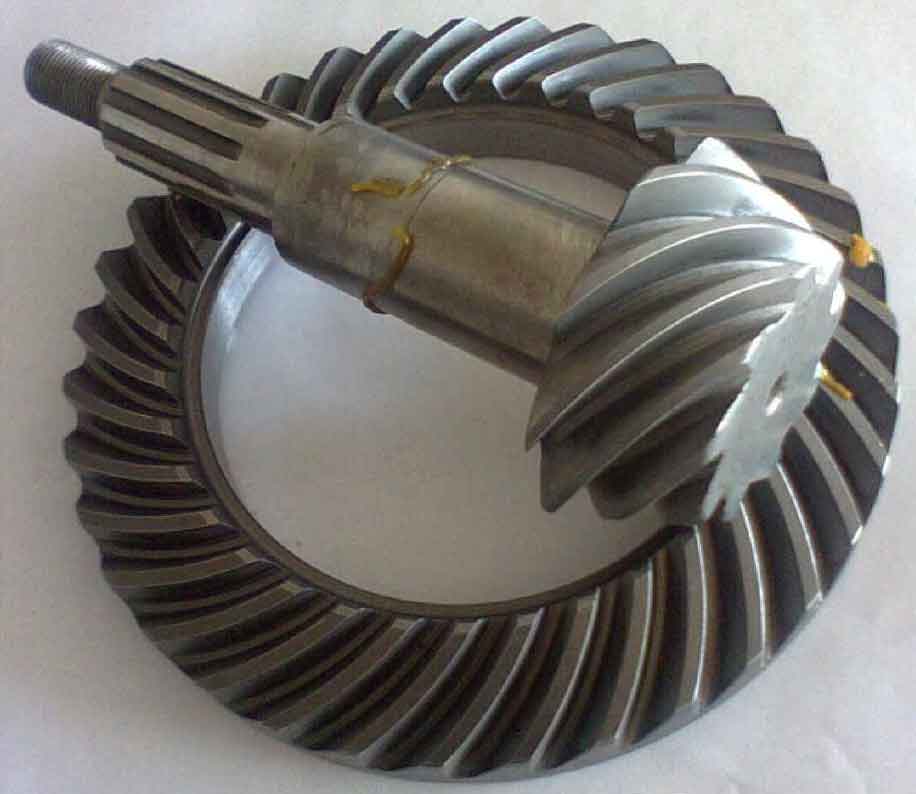Spiral bevel gear represents the most complex transmission form and the type of surface machining with high complexity at present. Because of its high coincidence, smooth transmission, low noise, large bearing capacity, large transmission ratio and other advantages, it is widely used in automobile manufacturing, shipbuilding, aircraft manufacturing, aerospace vehicles, engineering machinery and other fields. As one of the important marks to measure the meshing quality of the tooth surface, the properties of the tooth surface contact area (such as shape, size and position) will directly affect the stability, noise and service life of the gear pair transmission. Therefore, in order to get good tooth contact, it is of great significance to find a reasonable and convenient method for the machining theory of spiral bevel gears.

On the other hand, as the key equipment of digital manufacturing system, multi axis machining center is favored in the manufacturing of various high-tech equipment because of its superior machining performance for complex surfaces. Spiral bevel gear NC machining machine has a large degree of freedom for machining and adjustment, which provides a broader development space for the design and manufacturing of spiral bevel gears. Facing the digital manufacturing environment, the research on the basic theory of spiral bevel gear processing is of great significance to improve the level of China’s digital manufacturing industry and promote China to become an advanced manufacturing technology country.
In 1820, French geometer T. Olivier proposed the envelope surface method for solving conjugate tooth surfaces and the concepts of spiral bevel gears in the process of studying spatial meshing theory. Spiral bevel gears can be divided into spiral bevel gears and hypoid gears according to the spatial position relationship between the axis of the driving wheel and the axis of the driven wheel. The hypoid gear pair, which is more general than the spiral bevel gear pair, is obtained by offsetting the axis of the driving gear in the spiral bevel gear pair by a distance. E. Wildhaber, m.l.baxter and others put forward the basic principle and theory of spiral bevel gear, a special form of hypoid gear, in the middle of last century. In his invention patent report at the beginning of the 20th century, Paul B Ê ttcher described in detail the single tooth indexing processing method for machining spiral bevel gears with milling cutter disc, and on this basis, he proposed the continuous indexing processing method for machining spiral bevel gears with milling cutter disc. Paul B Ê ttcher has manufactured a prototype machine based on the above patent report to process a fully conjugate spiral bevel gear pair with equal height teeth.
Gleason company was founded in 1913 by james Gleason successfully developed the first spiral bevel gear milling machine with circular arc longitudinal tooth line (Gleason tooth system), and applied it to the automotive industry two years later. In 1919, Gleason introduced the concept of involute tooth and began to study the single tooth indexing machining method in order to improve the motion relationship in the cutting process and keep the cross-section of the tooth from the big end to the small end consistent, so as to avoid the tip sharpening of the small end tooth, based on the invention patent of Paul B Ê ttcher. In the 1920s, Gleason company carried out relevant theoretical research on hypoid gear transmission pair, a more extensive transmission form, and found that this kind of gear pair can effectively reduce the impact in the meshing process, improve the lubrication state of the teeth near the pitch line, and effectively improve the compressive strength of the tooth surface and the strength of the tooth root. In 1925, Gleason company launched a machine tool that can process hypoid gears, and since 1926, it has been widely used in Ford Motor Company of the United States. With the continuous development of the manufacturing industry, Gleason has gradually formed and improved the Gleason tooth spiral bevel gear manufacturing system, becoming a pioneer in leading the technological development of the spiral bevel gear manufacturing industry in the world.
The origin of Klingelnberg company in Germany can be traced back to 1863. In 1923, Dr. g. A. Klingelnberg (1880~1947) of Klingelnberg company used the conical hob to process the spiral bevel gear with the longitudinal tooth profile as quasi involute (i.e. Klingelnberg tooth system). The spiral bevel gear processing machine tool produced by him uses the continuous indexing method to process the spiral bevel gear with equal height teeth.
E. G. B ü hrle (1890~1956) founded Oerlikon company in Switzerland in 1924. Oerlikon company formed spiral bevel gear with extended epicycloid (i.e. Oerlikon gear system) in 1944, and successfully developed a mechanical structure gear milling machine for machining the gear system.
